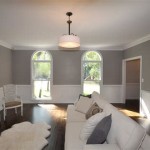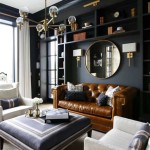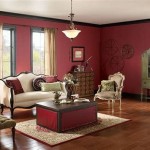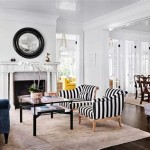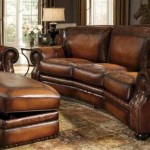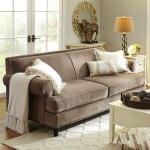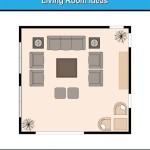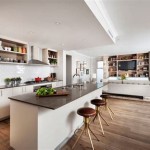Home Decorating Ideas for a Stunning Living Room
The living room serves as a central hub within a home, often functioning as a space for relaxation, entertainment, and social interaction. Decorating this area effectively requires careful consideration of design principles and personal preferences to create an environment that is both aesthetically pleasing and functionally practical. This article presents various home decorating ideas for living rooms, focusing on key elements like color schemes, furniture selection, lighting, and accessories, all while aiming for a cohesive and inviting atmosphere.
Color Palette and its Impact
Selecting a suitable color palette forms the foundation of any successful living room design. Color has a profound impact on the perceived mood and spaciousness of a room. Neutral colors like beige, gray, and off-white offer versatility and create a calming backdrop that allows for the integration of bolder accent colors. These neutral shades can be used on walls, large furniture pieces, and flooring to establish a sense of openness and light.
Accent colors are then introduced to add personality and visual interest. These can be incorporated through throw pillows, artwork, rugs, and decorative accessories. Choosing accent colors that complement the neutral base is crucial. For instance, pairing a cool gray with shades of blue and green evokes a serene and tranquil atmosphere, while incorporating warmer tones like gold, burnt orange, or deep reds imparts a sense of cozy warmth.
Monochromatic color schemes, which involve variations of a single color, can create a sophisticated and elegant look. This approach uses different shades and tints of the chosen color to add depth and visual texture to the space. For example, a living room painted in various hues of blue, from a light sky blue to a deep navy, can be both calming and visually engaging.
Another effective technique is to utilize a complementary color scheme, which involves using colors that are opposite each other on the color wheel, such as blue and orange, or yellow and purple. While this approach can be visually striking, it requires careful balancing to avoid overwhelming the space. Implementing the 60-30-10 rule, where 60% of the room is the dominant color, 30% is the secondary color, and 10% is the accent color, can help achieve a harmonious balance.
The amount of natural light in the living room should also influence the color selection. Rooms with ample natural light can handle darker and richer colors without feeling cramped, while rooms with limited natural light benefit from lighter and brighter shades to maximize the feeling of spaciousness.
Furniture Selection and Arrangement
The choice of furniture and its arrangement significantly impacts the functionality and aesthetic appeal of the living room. A well-chosen sofa is often the focal point of the room, and its size, style, and upholstery should be carefully considered. Sectional sofas are ideal for larger living rooms, providing ample seating for gatherings, while smaller sofas or loveseats are more suitable for compact spaces. The style of the sofa should complement the overall design aesthetic, whether it's modern, traditional, or eclectic.
Comfortable armchairs and accent chairs provide additional seating and can be strategically placed to create conversation areas. Different styles of chairs can be mixed and matched to add visual interest, but it's essential to maintain a cohesive look by coordinating upholstery fabrics and colors. Consider choosing chairs with varying textures and patterns to add depth to the space.
Coffee tables serve both a functional and decorative purpose. They provide a surface for drinks, books, and decorative items while also anchoring the seating area. The size and shape of the coffee table should be proportionate to the size of the sofa and the overall living room layout. Rectangular coffee tables are often suitable for longer sofas, while round or oval tables work well in smaller spaces or with curved sofas.
Side tables and console tables offer additional storage and display space. Side tables are typically placed next to sofas or chairs to provide a convenient surface for lamps, books, or beverages. Console tables can be positioned along walls or behind sofas to add visual interest and provide a space for displaying artwork or decorative objects. Storage ottomans can serve as both footrests and storage solutions, offering a practical and stylish addition to the living room.
The arrangement of furniture is crucial for creating a functional and inviting living room. The primary seating area should be arranged to encourage conversation and interaction. Avoid placing furniture flush against the walls, as this can make the room feel less inviting. Instead, creating a sense of intimacy by grouping furniture closer together can improve the flow and functionality of the space. Consider the placement of focal points, such as a fireplace or a large window, when arranging furniture to maximize their impact.
Lighting and its Role in Ambiance
Lighting plays a critical role in setting the mood and enhancing the functionality of the living room. A well-lit living room is both aesthetically pleasing and practical, allowing for a variety of activities, from reading and relaxing to entertaining guests. Employing a combination of different types of lighting, including ambient, task, and accent lighting, is essential for creating a balanced and versatile lighting scheme.
Ambient lighting provides overall illumination to the room and is typically achieved through ceiling fixtures, such as chandeliers, pendant lights, or recessed lighting. The choice of ambient lighting should be based on the size and style of the living room. Chandeliers can add a touch of elegance to a formal living room, while pendant lights offer a more modern and minimalist look. Recessed lighting provides a subtle and unobtrusive way to brighten the space.
Task lighting is specifically designed to provide focused illumination for specific activities, such as reading or working. Table lamps and floor lamps are commonly used for task lighting in the living room. These lamps should be positioned strategically to provide adequate light where it is needed most, such as next to a reading chair or sofa. Adjustable lamps allow for greater flexibility in directing the light.
Accent lighting is used to highlight specific features or objects in the living room, such as artwork, architectural details, or decorative accessories. Track lighting, spotlights, and picture lights are commonly used for accent lighting. These lights can be directed to illuminate specific areas of interest, adding depth and dimension to the room.
The type of light bulbs used can also impact the ambiance of the living room. Warm white light bulbs create a cozy and inviting atmosphere, while cool white light bulbs provide a brighter and more energizing light. LED bulbs are a popular choice due to their energy efficiency and long lifespan. Dimmers allow for greater control over the intensity of the lighting, enabling the creation of different moods and atmospheres.
Natural light is also an important consideration when planning the lighting for a living room. Maximizing natural light by keeping windows clean and unobstructed can significantly improve the overall brightness and feel of the space. Using sheer curtains or blinds allows natural light to filter into the room while providing privacy. Mirrors can also be used to reflect natural light and make the room feel brighter and more spacious.
Accessories and Personal Touches
Accessories and personal touches are essential for adding character and personality to the living room. These elements help to create a space that reflects the homeowner's individual style and preferences. Carefully chosen accessories can transform a generic living room into a warm and inviting space that feels uniquely personal.
Throw pillows and blankets are a simple and effective way to add color, texture, and comfort to the living room. These accessories can be easily changed to reflect seasonal trends or personal moods. Mixing and matching different patterns, colors, and textures can create a visually interesting and inviting seating area. Consider using a variety of sizes and shapes of throw pillows to add depth and dimension.
Rugs can anchor the seating area and add warmth and softness to the living room floor. The size and style of the rug should be proportionate to the size of the room and the furniture arrangement. A large rug that extends under the front legs of the sofa and chairs can help to define the seating area and create a cohesive look. Rugs with bold patterns or colors can add visual interest, while neutral rugs provide a more understated and versatile option.
Artwork is a powerful way to express personal style and add visual interest to the living room walls. Choose artwork that complements the overall design aesthetic and reflects personal preferences. A large statement piece can serve as a focal point, while smaller groupings of artwork can create a gallery wall. Consider the color palette and style of the artwork to ensure it complements the overall design scheme.
Decorative accessories, such as vases, candles, sculptures, and books, can add personality and visual interest to the living room. These items should be carefully curated and arranged to create a cohesive and aesthetically pleasing display. Grouping items of similar colors or textures can help to create a sense of unity. Avoid cluttering the space with too many accessories; instead, focus on selecting a few well-chosen items that reflect personal style.
Plants can add a touch of nature and freshness to the living room. Indoor plants not only enhance the aesthetic appeal of the space but also improve air quality. Choose plants that are appropriate for the lighting conditions and the overall design aesthetic. Grouping plants together can create a lush and inviting display.
:strip_icc()/cdn.cliqueinc.com__cache__posts__212361__-2030968-1483470364.700x0c-8571e60cad7b42a981ab29ae10b5c153-497b002f87af4747b2ab38b560e7c0fd.jpg?strip=all)
How To Decorate A Living Room 20 Ideas And Common Mistakes

50 Inspirational Living Room Ideas Design

78 Beautiful Living Room Ideas For A Timeless Look

Looking For Ideas To Decorate Your Living Room Designcafe

15 Apartment Living Room Design Ideas And Examples

78 Beautiful Living Room Ideas For A Timeless Look

Looking For Ideas To Decorate Your Living Room Designcafe

78 Beautiful Living Room Ideas For A Timeless Look
:strip_icc()/102042617-527592a3bf874dcaaae8e4d5c12a7a90.jpg?strip=all)
41 Living Room Ideas To Make Your Gathering Space Favorite Place

Living Room Decorating Ideas The Home

